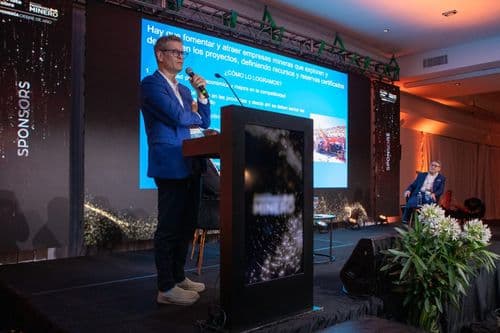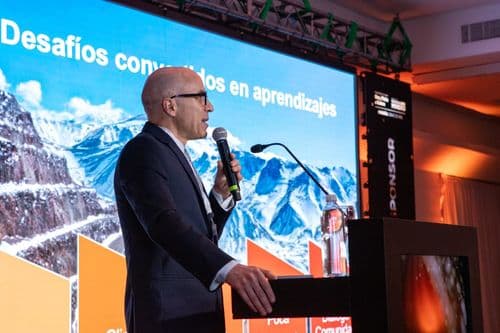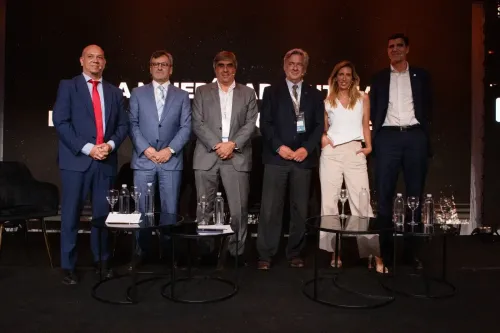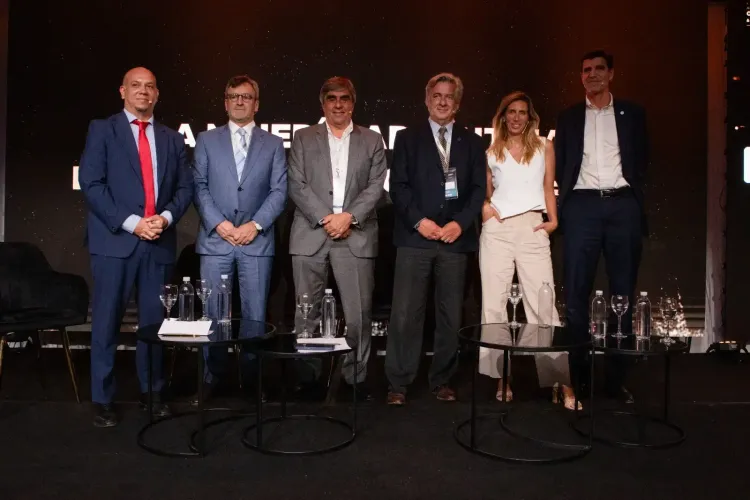The London Metal Exchange (LME) will offer a series of training courses in the cities of Buenos Aires (July 23–25) and Mendoza (August 6–8), led by Jorge Dyszel. The expert will provide insights into the various functions and tools the LME offers for trading minerals and metals, as well as hedging strategies to manage price fluctuations. For further information, visit: https://www.teach4life.net/lme
By Panorama Minero
How is the business climate in Argentina perceived, particularly in the mining sector?
The context in which we chose to come to Argentina is incomparable to that of a year ago. A new model has been gradually taking shape and—without entering into political opinions—this has made our presence here possible.
Argentina has legislation that guarantees investment protection for 30 years. In addition, this year the currency controls (known as the CEPO) are being lifted. While not everyone is affected in the same way—importers still face this restriction—exporters, through ALyCs (Argentine brokerage firms), have access to the official exchange market, enabling them to hedge and trade on the London Metal Exchange (LME). With these two factors in place, the remaining challenge is to implement key adjustments to the tax system.
We believe this is the right moment, and what I perceive most strongly is a deep sense of curiosity.
I believe we are witnessing a second Industrial Revolution. Based on what we read, hear, and observe, the global economy is in constant demand for minerals and metals. The LME has 500 metal warehouses in 14 countries, creating a need to improve procedural efficiency—including land-based logistics and administration.
What role does the London Metal Exchange play in international metal trading?
The London Metal Exchange (LME) has a 147-year history. It was originally created to connect Chilean and Asian copper producers with representatives of British consumers during the Industrial Revolution.
In that context of industrial expansion and growing consumption, buyers wanted to secure a fixed metal price—typically three months in advance—between the production center and a port in England.
Over time, the need arose to fix prices not only three months ahead but for longer periods as well. Today, the LME offers over 200 forward prices for all listed metals. There’s a cash price for the day after tomorrow; from that point up to 90 days, prices are listed for every business day. From 90 to 180 days, prices are available for every Wednesday. And from 180 days to 10 years out—specifically 123 months—prices are quoted for every third Wednesday.
The LME was originally created to serve one key function: to provide a highly reliable framework allowing producers and consumers to lock in a fixed price on a specific date—whether buying or selling. After that, between the producer or consumer and the trader or distributor, an additional value known as the premium is negotiated.
The second role of the LME is not only as a price reference but also as a platform for active trading. What does that mean? Suppose a producer agrees to sell copper for the entire year of 2026, with the price to be determined later via the LME. Let’s assume today’s price is $9,700. The question then becomes: how much will that copper be worth in 2026?
Typically, two operations are carried out: the producer sells the physical metal to the client, and simultaneously sells the same volume on the LME, matching the same delivery period. The LME acts as a safety net, enabling the producer to enter and exit a futures contract on the same day the client's price is fixed. As a result, there is no further obligation—only a payment or receipt of the price difference.
Who is this course intended for?
This course is intended for mining companies, traders, lawmakers, and national and provincial tax authorities, among others.
I believe Argentina is working toward a fair and efficient tax collection system, and for that to happen, legislators need to be well-informed. If the goal is to maintain the export tax, so be it—but it is essential to understand who is hedging, to verify their operations properly, and to apply the tax—while it still exists—based on the actual net value. Otherwise, it becomes unfair.
If a mining producer incurs a loss on the London Metal Exchange, what kind of loss is it? Is it financial or hedge-related? If it’s a financial loss, how is it accounted for? If it’s a hedge, how should it be treated?
In the case of a hedge—just like in all major legal frameworks—it should be deferred until the actual transaction takes place (sale or export), since it is part of a covered position. Understanding these distinctions is essential to knowing what is really happening.
Do major producers take on the role of traders?
Generally, multinational companies understand the entire value chain—from mining production to final commercialization—and sometimes operate their own smelters. However, in some cases, they don’t have smelting facilities and must send their production elsewhere.
The potential of the tools provided by the LME is enormous, and future growth is likely to come structurally from smaller-scale operations, often run by private junior mining companies. That’s where our educational efforts are focused: to help people understand how this price-based market works, how producers can protect themselves against price volatility, and—most importantly—how a lack of knowledge should never be the factor that harms you.


























